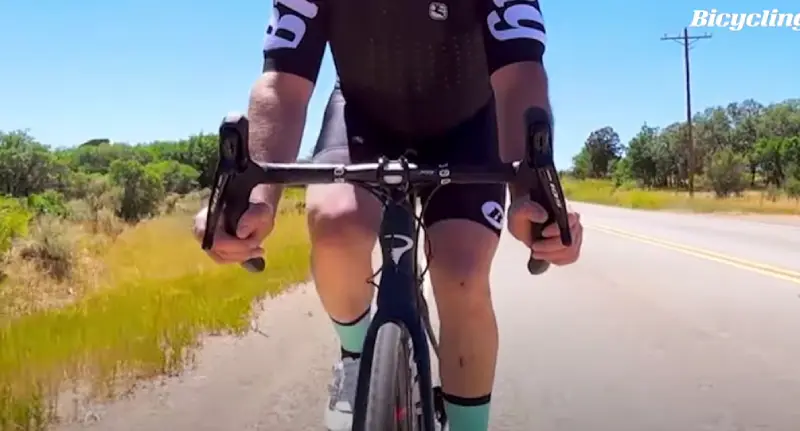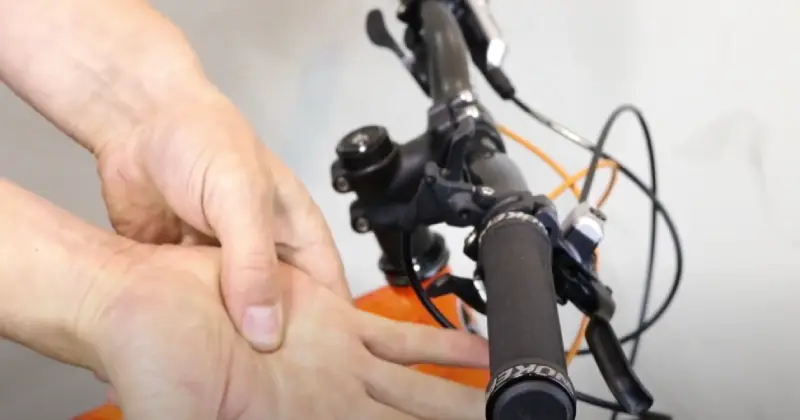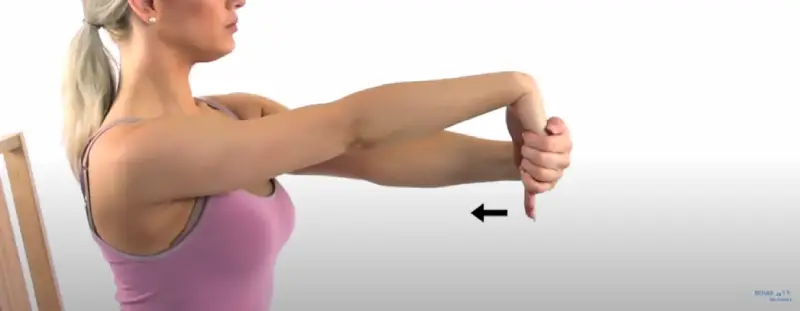Numbness and tingling in hands and arms can affect a cyclist’s ability to grab onto the handlebars and react quickly to changes in terrain or traffic. Reduced arm and hand sensation may lead to compromised control and coordination, increasing the likelihood of accidents or falls while cycling.
Numbness and tingling may result from repetitive wrist movements during cycling. Numbness occurs because of an improper bike fit and can predispose to excessive compression on the ulnar and median nerves, causing wrist or palm pain and finger numbness.
This blog post discusses the most common reasons for numbness and tingling in arms and hands while cycling and offers tips for preventing and managing them.
Discover 7 Key Reasons: Poor Wrist Angles, Hand Pressure, Neck Tension, Nerve Issues, Road Vibrations, Repetitive Use. Ride Comfortably!

Cycling helps you stay fit and enjoy the outdoors, but many cyclists experience numbness and tingling in their arms and hands. Knowing what causes these sensations can help you ride better, prevent discomfort, and improve your cycling experience.
- Wrist Position: Incorrect wrist positioning, such as excessive bending or extension, can compress nerves in the wrist and hand, leading to numbness and discomfort during rides.
- Pressure on the Hands: Excessive pressure on the hands, often caused by leaning heavily on the handlebars or gripping too firmly, can restrict blood flow and compress nerves, resulting in numbness in the hands and fingers.
- Neck Strain: Poor neck posture or strain while cycling can create tension in the nerves that travel down the arms, potentially causing numbness in the hands and arms because of nerve impingement.
- Nerve Compression: Prolonged pressure on nerves from incorrect bike fit or prolonged gripping can lead to nerve compression, causing arm and hand tingling.
- Vibration Exposure: Continuous exposure to road vibrations and uneven terrain while cycling can transmit vibrations through the handlebars, leading to numbness and tingling in the hands and arms.
- Repetitive Motion: The repetitive motion of pedaling combined with a static hand position can strain the nerves and blood vessels, resulting in tingling sensations because of reduced blood flow and nerve irritation.
Numbness & Tingling In Hands & Arms: 7 Preventing & Managing Tips
Cycling is a rewarding and stimulating activity that provides many health benefits. However, prolonged rides can sometimes lead to discomfort, such as tingling in the arms and hands. To ensure a more comfortable cycling experience, consider the following tips:
Get a Bike Fitting
Proper bike fitting is essential to adjust your bike to fit your body correctly. A well-fitted bike can help prevent unnecessary strain on your hands and arms, reducing the likelihood of numbness and tingling.
Wear Gloves
Remember to invest in some good cycling gloves. Gloves can help cushion your hands and absorb vibrations from the road, reducing the impact on your nerves and minimizing discomfort.
Get a Grip

Hold the handlebars with a relaxed but firm grip. Gripping too tightly can increase pressure on your hands and compress nerves, leading to numbness. Find a comfortable grip to steer effectively without straining your hands.
Use Your Core
Ensure your core muscles are engaged while cycling to support your upper body. A strong core can help distribute your weight more evenly on the bike, reducing the pressure on your hands and arms. Keep your core engaged throughout your ride to ease the strain on your upper body.
Adjust Your Hands
Avoid keeping your hands in one position for extended periods. Change hand positions frequently to shift pressure points and prevent excessive stress on specific areas of your hands and arms. Use different hand placements on the handlebars to disperse weight.
Relax Your Elbows
You should keep your elbows bent while riding to act as shock absorbers. Keeping your elbows relaxed can help absorb vibrations and effects from the road, preventing them from transferring directly to your hands and arms. This simple change can significantly reduce discomfort during your ride.
Take Regular Breaks
Incorporate breaks into your cycling routine to give your hands and arms a rest. During breaks, stretch your arms, shake out your hands, and allow blood circulation to be restored to these areas. Abrupt breaks can help ease numbness and tingling and refresh you for the rest of your ride.
Essential Exercises for Cycling Strength & Conditioning
Cycling requires cardiovascular endurance, muscular strength, and stability to perform optimally. Incorporating specific exercises into your cycling training routine can improve your performance and reduce injuries. Here are some essential cycling exercises:
- Crunch: Engage your core muscles with crunches to improve abdominal strength, which is crucial for maintaining a stable and efficient cycling posture.
- Plank: Strengthen your core, shoulders, and back with planks, which enhance overall stability and endurance during long
rides. - Bridge/Glute Max: Target your gluteus maximus muscles with bridges to improve power output and pedal efficiency while cycling.
- Lunge: Perform lunges to strengthen your lower body muscles, including quadriceps, hamstrings, and glutes. These muscles are essential for generating power and endurance on the bike.
Recommended Stretches for Cyclists

Besides strength training, flexibility is crucial in cycling performance, improving range of motion, and reducing muscle tightness. Here are some recommended stretches specifically beneficial for cyclists:
- Wrist Extensor Stretch: Stretch your wrist extensor muscles to ease tension from gripping the handlebars and maintain wrist flexibility during rides.
- Wrist Flexor Stretch: Stretch your wrist flexor muscles to counteract the repetitive motion of gripping the handlebars, promoting wrist mobility and preventing discomfort.
- Chest Stretch: Stretch your chest muscles to improve breathing capacity and posture while cycling, reducing strain on your upper body.
Conclusion
In conclusion, cycling is undoubtedly an enjoyable and health-boosting activity, but tingles and numbness are nuisances we could do without. Remember, proper wrist positioning, reduced pressure on hands, controlled neck strain, momentarily relieving nerve compression, managing vibration exposure, and balancing repetitive motion are crucial points to keep numbness and tingling at bay.
With a few tweaks to your bike, gear, and cycling habits, your journey to a smooth, numb-free ride is just around the corner. So, put on your helmets, tighten your shoelaces, and conquer those roads without discomfort.
FAQs
Why Is Hydration Important For Preventing Numbness And Tingling While Cycling?
Proper hydration helps maintain muscle and nerve function, reducing the risk of cramps and nerve sensitivity that can lead to numbness and tingling


